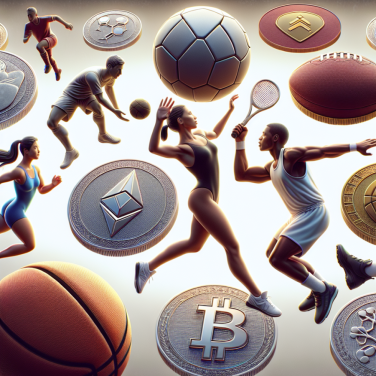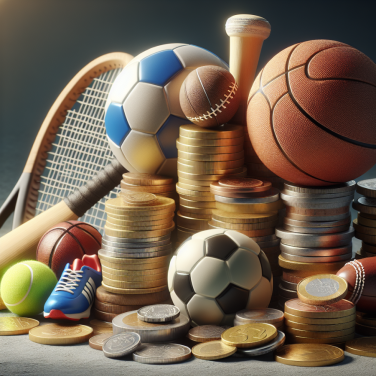Unlocking Athletic Potential: The Role of Coin-Based Incentives
In the realm of competitive sports and personal fitness, unlocking the fullest potential of athletes often requires innovative approaches to motivation. One such approach that has gained traction is the use of coin-based incentives, a system in which athletes earn physical or digital coins for achieving specific goals or surpassing certain milestones.
At the foundation of this concept is the well-established psychological theory of operant conditioning, where behaviors are influenced by their consequences. Rewards, in this case symbolized by coins, serve to increase the likelihood of a behavior being repeated. When athletes are given tangible tokens of achievement, they receive not only a physical reminder of their success but also a form of currency that can be redeemed for rewards, further boosting their motivation to excel.
First, it’s essential to understand how coins act as a source of immediate feedback. Unlike traditional forms of encouragement, such as verbal praise or delayed gratification through trophies and titles, coins provide instant validation of an athlete’s efforts. They do not need to wait until the end of the season or even the end of a game to receive recognition. Upon completing a set number of laps, achieving a personal record, or mastering a new skill, athletes are instantly rewarded, reinforcing their actions and encouraging them to continue pushing their boundaries.
Moreover, these coin-based incentives often come with a degree of flexibility that other reward systems lack. Athletes can typically accumulate these coins over time and choose when and how to spend them, whether it's on gear, private coaching sessions, or other sports-related perks. This ‘currency’ approach empowers athletes with a sense of autonomy and control over their rewards, which can be a powerful motivator in itself. It transforms their hard work directly into purchasing power, adding a layer of practicality to the incentive system.
The social aspect of coin incentives should not be overlooked either. By making achievements visible and quantifiable, coins can foster a sense of competition and camaraderie among athletes. For instance, when team members notice a peer earning coins, it can create a positive kind of peer pressure, driving them to work harder to earn their own. Sharing their accomplishments and purchases with these coins can also build a supportive community through shared goals and healthy rivalry.
Furthermore, these coin incentives can help in goal-setting practices. By tying coins to specific, measurable, achievable, relevant, and time-bound (SMART) goals, athletes can have a more structured framework for success.
Read also:
Unveiling the Heroic Sport: An Introduction to Varzesh-e Pahlavani
Harnessing the Power of Reward Systems: Coins as Motivational Tools for Athletes
Reward systems have long been used as a strategy to encourage behavior and enhance motivation across various fields, including athletics. Implementing a coin-based reward mechanism can serve as an innovative way to bolster motivation and performance among athletes by tapping into a wide array of psychological and behavioral principles. In this exploration, we delve deep into the intricacies and benefits of coin reward systems, and how they can be specifically leveraged within the realm of sports to drive athlete's motivation and success.
One important aspect of coin rewards is their tangibility and the immediate recognition they provide. For athletes, receiving a physical token such as a coin can serve as a concrete symbol of achievement and hard work. This tangible form of recognition can be more satisfying and impactful than abstract rewards. When an athlete accomplishes a specific milestone or demonstrates exceptional effort, receiving a coin can create a strong associative bond between the effort and the reward, reinforcing the desired behavior.
In addition, coins can act as a form of currency within the athletic program, creating an internal economy that adds a layer of excitement and competition. Athletes may earn coins for achieving personal bests, displaying teamwork, showing perseverance, or improving skills. These coins could then be redeemed for various privileges or rewards, such as special equipment, exclusive training sessions, or other sports-related benefits. This gamified approach to motivation plays into an athlete's competitive nature, encouraging them to earn more coins and, consequently, to focus on their performance and development.
The customization and variety possible with coins also play a significant role in their effectiveness as a motivational tool. Coins can be designed with specific insignias, colors, and inscriptions that align with the team's identity or goals, making them unique and coveted items within the athletic community. This customization helps build a sense of identity and pride among team members, fostering a stronger team cohesion and a culture of excellence.
Social recognition is another powerful factor in the effectiveness of coins as rewards. Awarding coins during team meetings or in front of peers can amplify their value through social reinforcement. Recognizing athletes publicly boosts their social status within the team and provides them with a platform to be celebrated for their hard work and achievement. This recognition not only motivates the individual recipient but can also inspire their teammates to strive for similar accolades, creating a ripple effect of motivation and effort across the team.
Finally, the psychological principle of variable reinforcement can be employed through coin rewards.




